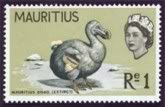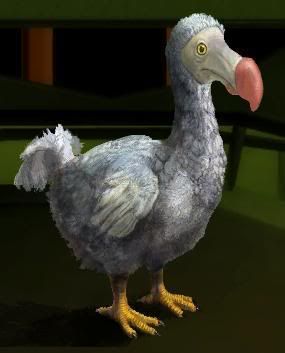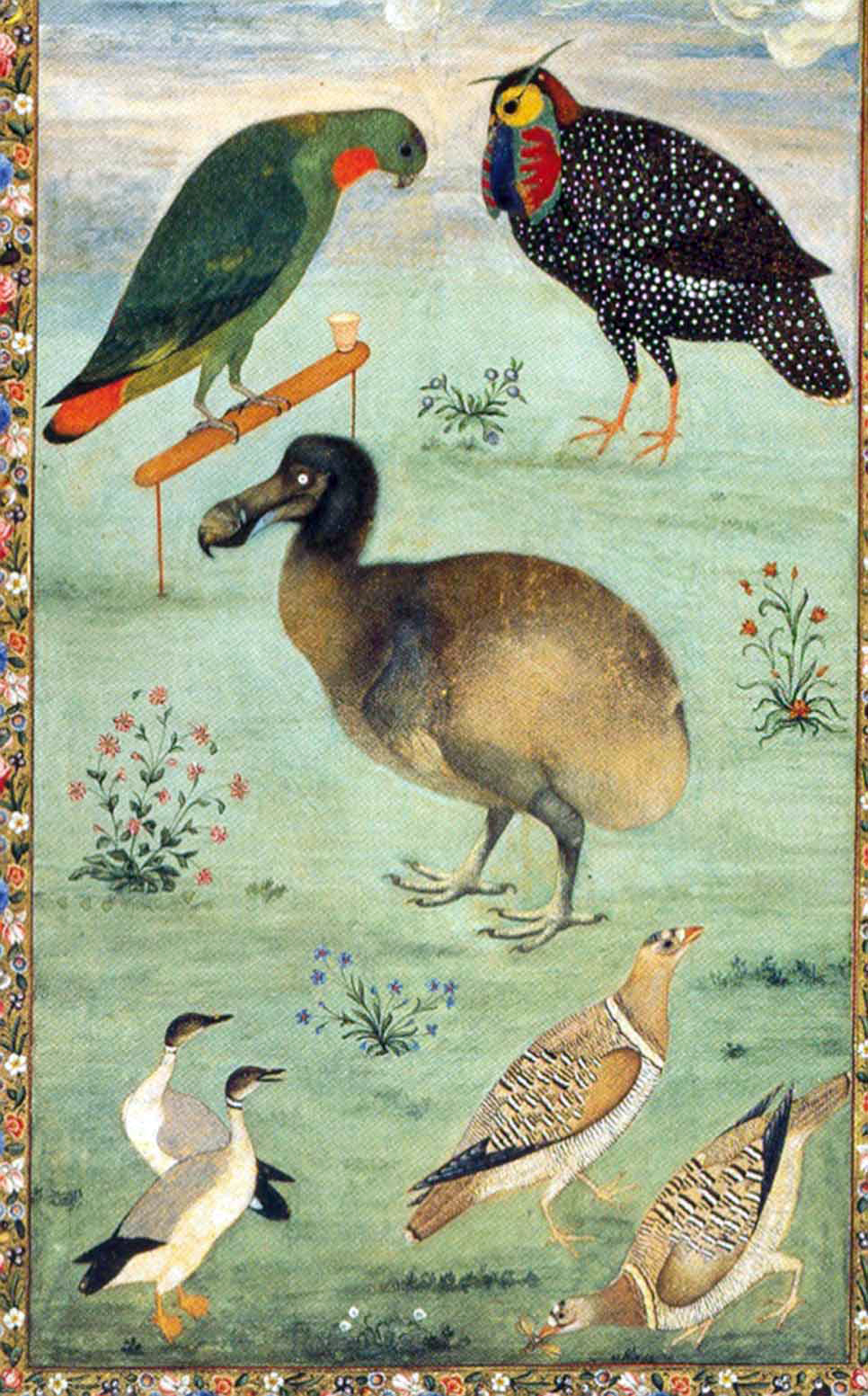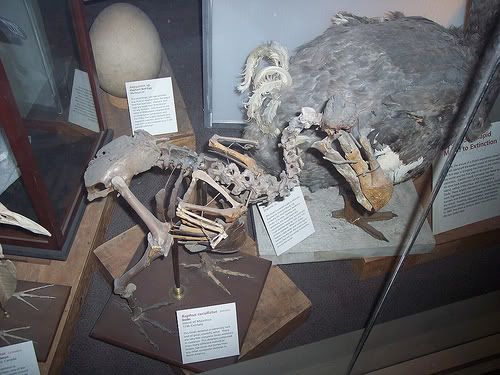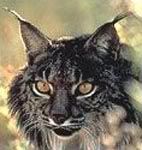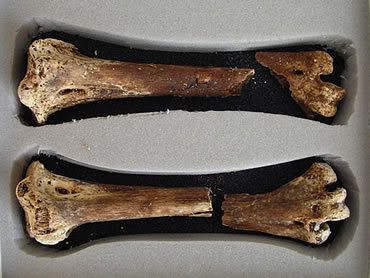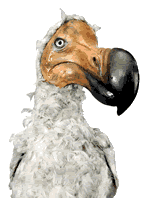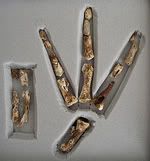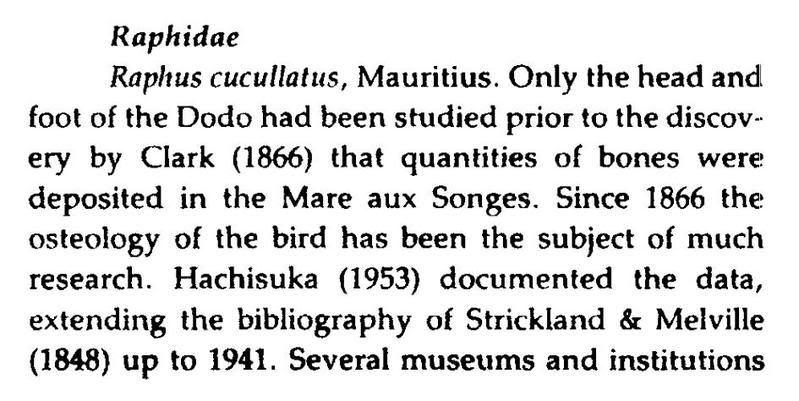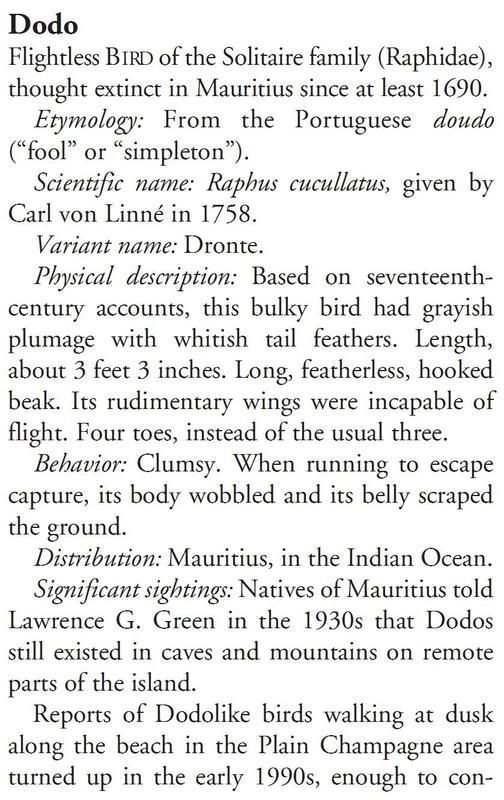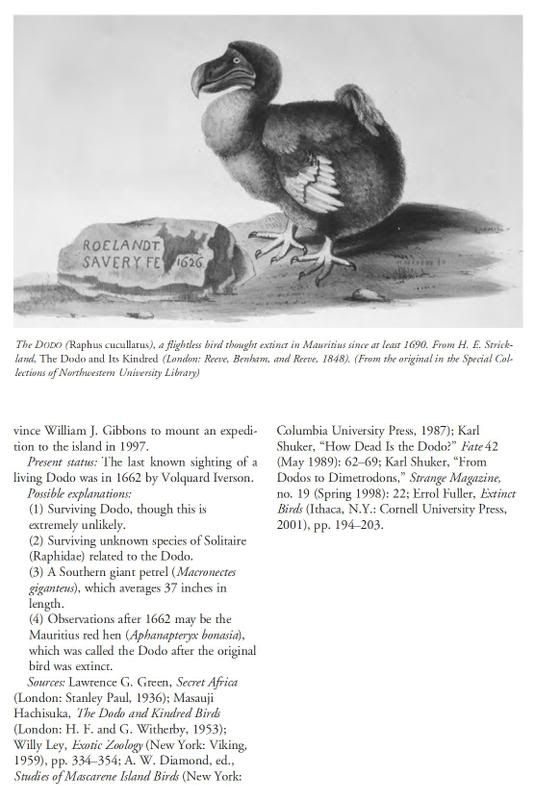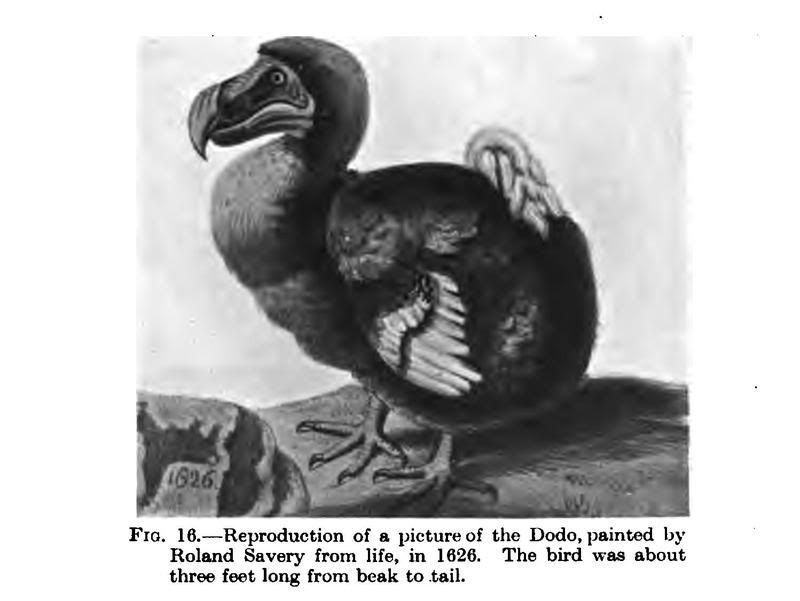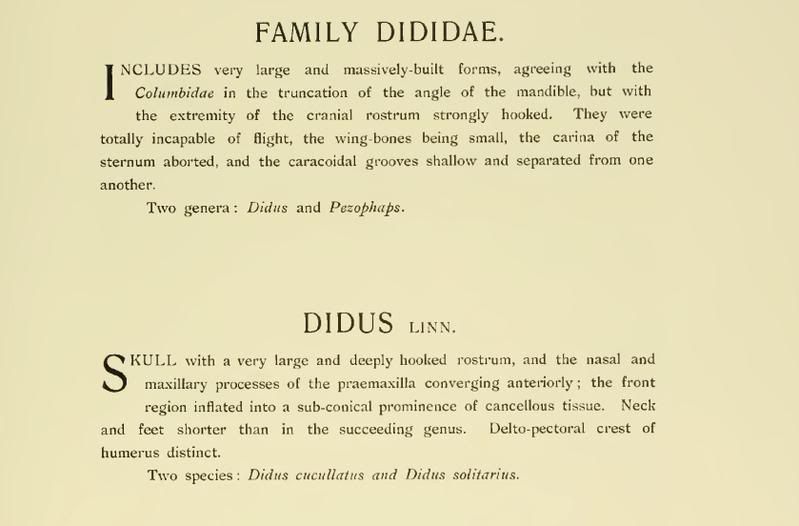Post by Melanie on Jul 10, 2007 12:37:03 GMT
Dodo Skeleton Found on Island, May Yield Extinct Bird's DNA
Kate Ravilious
for National Geographic News
July 3, 2007
Adventurers exploring a cave on an island in the Indian Ocean have discovered the most complete and well-preserved dodo skeleton ever found, scientists reported yesterday.
Researchers say the find would likely yield the first useful samples of the extinct, flightless bird's DNA.
Very little has been known about the dodo—from what exactly it looked like to what it ate—since it became extinct in the 1600s.
The new skeleton is thought to be complete and was likely preserved by its cave setting.
The cavers found the remains off the coast of Africa on Mauritius, the only island were dodos were known to have lived (see a map of Africa).
The discovery was made last month, but its location was kept secret until the skeleton was completely recovered on June 29.
Nicknamed Fred after the caver who found the bones, the bird was kept under guard while the recovery took place, according to press reports.
DNA Clues
Until now most of the information about dodos has come from scattered bone fragments. Only one other full skeleton was ever unearthed—in the 1860s—but it has been of limited scientific value, because the person who discovered it never revealed where it was found.
"We need to know about the location to understand the ecology of the dodo," said Kenneth Rijsdijk, a scientist with Geological Survey of the Netherlands, who plans to study the environment in which the newfound bird was discovered.
The site of the new dodo skeleton and the layout of its bones has been precisely recorded, making the find already very useful to scientists, he added.
"We can take soil samples and discover how and why the animal got there," Rijskijk said.
What's more, the location of the new skeleton makes it much more likely to yield DNA, said Beth Shapiro, a geneticist from Oxford University who studies dodo remains.
Most other dodo bones have come from a swampy region of Mauritius known as Mare aux Songes, she said.
"We have found tons of bones there, but the hot, wet, acidic environment has meant that the DNA survival has been terrible," Shapiro said.
Fat Pigeons
Because dodos laid their eggs on the ground, the birds were easy targets for predators such as rats and pigs, which were introduced by Europeans 400 years ago.
Humans also hunted the dodo, which was about the size of a turkey, and within 80 years of its discovery the bird became extinct.
Since then the only dodo DNA sample has come from a specimen that was transported from Mauritius to the U.K. by a collector in the 15th century, Shapiro said.
"From a tiny fragment of DNA we were able to figure out its taxonomic relationship to other birds and show that dodos were essentially fat pigeons," she said of the study, which was conducted in 2002.
The cave site of the new skeleton is likely to provide the best hope of a decent DNA sample because the bones will not have been exposed to sunlight and the temperature was fairly constant, she added.
"We are really excited about the new find and hope it might tell us much more about the behavior and appearance of dodos," Shapiro said.
Kate Ravilious
for National Geographic News
July 3, 2007
Adventurers exploring a cave on an island in the Indian Ocean have discovered the most complete and well-preserved dodo skeleton ever found, scientists reported yesterday.
Researchers say the find would likely yield the first useful samples of the extinct, flightless bird's DNA.
Very little has been known about the dodo—from what exactly it looked like to what it ate—since it became extinct in the 1600s.
The new skeleton is thought to be complete and was likely preserved by its cave setting.
The cavers found the remains off the coast of Africa on Mauritius, the only island were dodos were known to have lived (see a map of Africa).
The discovery was made last month, but its location was kept secret until the skeleton was completely recovered on June 29.
Nicknamed Fred after the caver who found the bones, the bird was kept under guard while the recovery took place, according to press reports.
DNA Clues
Until now most of the information about dodos has come from scattered bone fragments. Only one other full skeleton was ever unearthed—in the 1860s—but it has been of limited scientific value, because the person who discovered it never revealed where it was found.
"We need to know about the location to understand the ecology of the dodo," said Kenneth Rijsdijk, a scientist with Geological Survey of the Netherlands, who plans to study the environment in which the newfound bird was discovered.
The site of the new dodo skeleton and the layout of its bones has been precisely recorded, making the find already very useful to scientists, he added.
"We can take soil samples and discover how and why the animal got there," Rijskijk said.
What's more, the location of the new skeleton makes it much more likely to yield DNA, said Beth Shapiro, a geneticist from Oxford University who studies dodo remains.
Most other dodo bones have come from a swampy region of Mauritius known as Mare aux Songes, she said.
"We have found tons of bones there, but the hot, wet, acidic environment has meant that the DNA survival has been terrible," Shapiro said.
Fat Pigeons
Because dodos laid their eggs on the ground, the birds were easy targets for predators such as rats and pigs, which were introduced by Europeans 400 years ago.
Humans also hunted the dodo, which was about the size of a turkey, and within 80 years of its discovery the bird became extinct.
Since then the only dodo DNA sample has come from a specimen that was transported from Mauritius to the U.K. by a collector in the 15th century, Shapiro said.
"From a tiny fragment of DNA we were able to figure out its taxonomic relationship to other birds and show that dodos were essentially fat pigeons," she said of the study, which was conducted in 2002.
The cave site of the new skeleton is likely to provide the best hope of a decent DNA sample because the bones will not have been exposed to sunlight and the temperature was fairly constant, she added.
"We are really excited about the new find and hope it might tell us much more about the behavior and appearance of dodos," Shapiro said.



